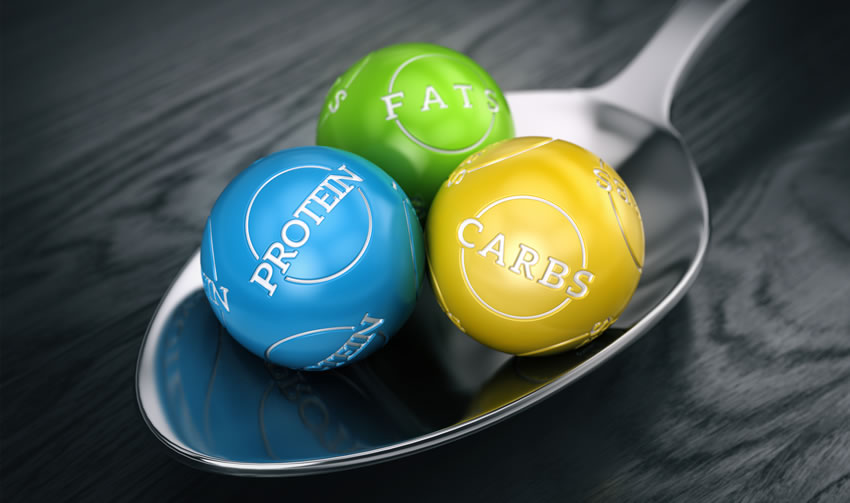Macro Counting Diet

The macro diet has been gaining a lot of popularity because of its flexibility regarding food choices.
Unlike other diets that label certain foods as bad and even cut out entire food groups, Flexible macro dieting believes that all foods and food groups can be part of one’s weight loss diet.
This philosophy is based on scientific studies showing that quantity of food eaten is the most important factor in losing or gaining weight. This is preferable to avoiding or limiting a certain food or macro group.¹
Several people have taken it upon themselves to further prove that this science holds true.
- One guy ate mostly twinkies and still lost weight
- Another guy ate nothing but pizza and still lost weight.
- Who could forget the Subway diet? Jared ate nothing but Subway and lost over 100 pounds.
The Macro Diet Basics
The macro diet claims that you can eat whatever you want and still lose unwanted fat if it fits your macros (IIFYM).
The term “macros” is simply short for the three macronutrients; carbohydrates, protein, and fat. The flexible diet prescribes a individual macro goals that are based on your REE (resting energy expenditure).
This is combined with your daily activity to form your TDEE (total daily energy expenditure).²
[Here’s an easy to use tool for calculating your TDEE and Macros ]
To lose fat, consume fewer macros than your body requires. This is usually set at 20% depending on what the person’s unique goals are. By only promoting a moderate calorie deficit, you’re more likely to have slow and steady progress long-term. This is better than quick weight loss short-term followed by a weight loss plateau.
Once your TDEE and macro ratios are determined, you then count macros in the foods you eat. You keep eating until your macro goals have been met for the day.
An example:Let’s say a woman’s TDEE is 1650 calories on her exercise day. Those calories are then divided among the three macros at the following percentages:
- Protein: 30%
- Carbs: 45%
- Fat: 25%
As there are 4 calories per gram of protein and carbohydrates and 9 calories per gram of fat, this translates into the following;
- Protein: 124 grams
- Carbs: 186 grams
- Fat: 46 grams
She then eats until she hits each of those targets.
Counting Macros In the Food You Eat

Once you know how much of each macro to eat, you can begin tracking your consumption using a food log.
Luckily, this tedious process is much easier using apps that offer large nutritional databases to keep track of everything for you. Here are a few to consider.
Search for the food you are eating in the app’s database, adjust the serving size or weight, and then click done. The app will keep a running total of your macros as you eat throughout the day.
You’ll also need a digital food scale.
This is to weigh portions of fresh food like vegetables and meat since as their nutritional info is tied to the weight of the particular food. The scales are easy to use and it creates just a small extra step in the process of tracking.
You may want to plan their meals out ahead of time so that they can equally distribute their macros throughout the day.
You can just wing it, but sometimes you’re left with few choices at the end of the day.
For example, if you hit your fat and carb macro but have just protein left, you’ll have to choose foods like ultra-lean meats or pure whey protein in order to then hit your protein target.
Does IIFYM mean that junk food is encouraged?
While the flexible diet is more concerned with the amount of food, rather than how the food is classified, it does recognize the importance of eating healthy.
Most advocates of this eating style say that healthy, whole foods should comprise 80-85% of one’s diet, while 20-15% can be reserved for foods labeled as “junk”. This is a subjective term, but things like chocolate, potatoes chips, french fries, and ice cream would generally fall into this category.
Flexible dieters should also be mindful of their fiber intake. This helps ensure that they are eating enough healthy foods.
Women should strive for more than 20 grams per day and men for 30 or more grams per day. This is dependent on your weight and age, so for exact fiber requirements, here’s a good resource.
If you’re looking for a weight loss plan that offers flexibility and a plethora of food choices then the flexible diet may be right for you.
- References:
- Rolland-Cachera, M. F., Deheeger, M., Akrout, M., & Bellisle, F. (1995). Influence of macronutrients on adiposity development: a follow up study of nutrition and growth from 10 months to 8 years of age. International journal of obesity and related metabolic disorders: journal of the International Association for the Study of Obesity, 19(8), 573-578. abstract
- Layman, D. K., Boileau, R. A., Erickson, D. J., Painter, J. E., Shiue, H., Sather, C., & Christou, D. D. (2003). A reduced ratio of dietary carbohydrate to protein improves body composition and blood lipid profiles during weight loss in adult women. The Journal of nutrition, 133(2), 411-417. abstract
- Layman, D. K., Evans, E. M., Erickson, D., Seyler, J., Weber, J., Bagshaw, D., … & Kris-Etherton, P. (2009). A moderate-protein diet produces sustained weight loss and long-term changes in body composition and blood lipids in obese adults. The journal of nutrition, 139(3), 514-521. abstract
References
- Sacks, F. M., Bray, G. A., Carey, V. J., Smith, S. R., Ryan, D. H., Anton, S. D., ... & Leboff, M. S. (2009). Comparison of weight-loss diets with different compositions of fat, protein, and carbohydrates. N Engl J Med, 2009(360), 859-873. http://www.nejm.org/doi/full/10.1056/nejmoa0804748#t=article
- Mifflin, M. D., St Jeor, S. T., Hill, L. A., Scott, B. J., Daugherty, S. A., & Koh, Y. O. (1990). A new predictive equation for resting energy expenditure in healthy individuals. The American Journal of Clinical Nutrition, 51 (2), 241-247. Link
I honestly don’t understand how you can lose weight following the IIFYM method. Eating 180g of carbs per day seems way too high. That’s how I gained weight in the first place! I’m currently following a strict keto diet, and I eat about 16g of total carbs per day. How could eating 180g of carbs per day enable me to lose weight? I just don’t understand how it could.
I’m Stacey, age 30 and I’m really fat. I’ve been self-pitying myself for months now since I got bigger. I feel ugly and unwanted but your article really gave me hope. I already had read a dozen of ways on how to lose weight but failed doing so because I always got discouraged. Somehow, I still wanted to try again and be confident, so if I may ask do you have ideas on what best healthy energy drinks can be possible for weight loss? Thanks a lot for this.
What you think about eating and exercising daily. Including every kind of stuff to eat but do exercise daily. Will this effect in weight loss?
It depends on how much you are eating and how much energy your body requires. As the article states, you have to determine your TDEE and then go from there.
Very nice post, flexible diet, Eat Whatever and lose unwanted fat. That is very Good.
Thanks for share this post.
afternoon all I’m a young lady I have seriuos problem with food and I need help please help me I do want to start a diet but don’t know what to eat please assist me on what to eat from breakfast to dinner
What foods do you eat now? You really should just calculate your TDEE and macros for weight loss and then track what you eat and stop eating for the day when you hit your targets.